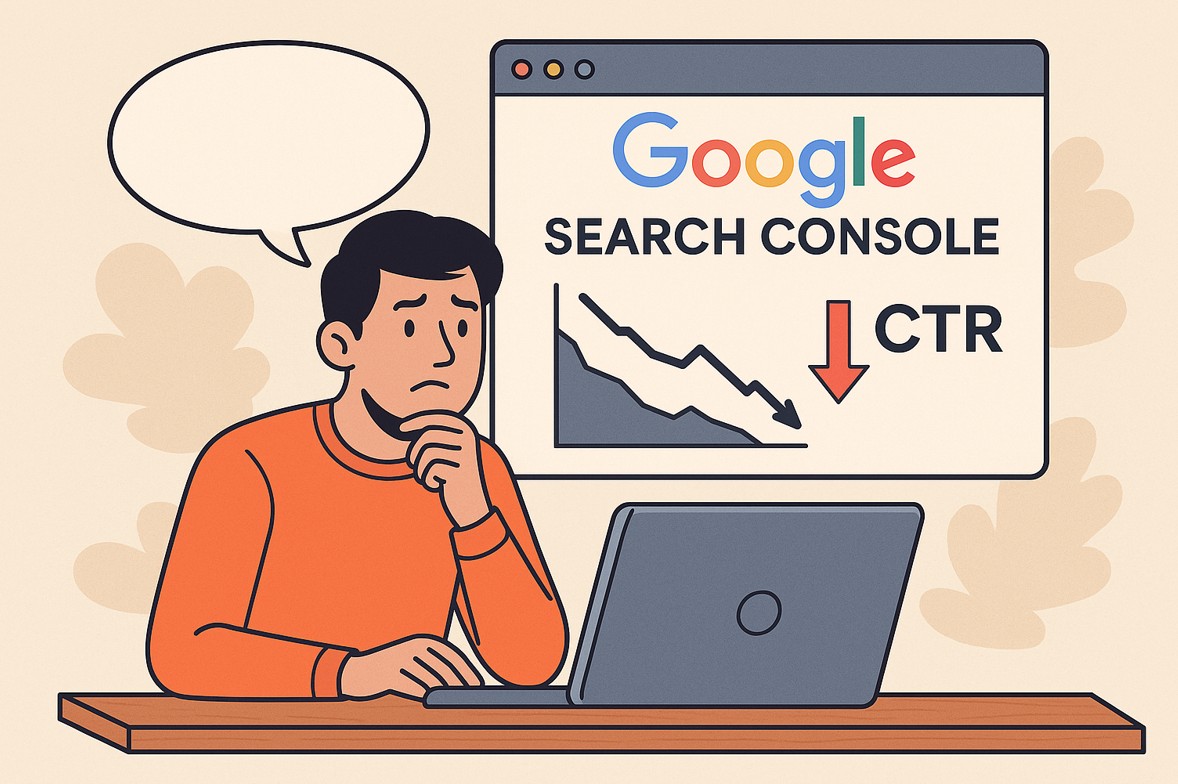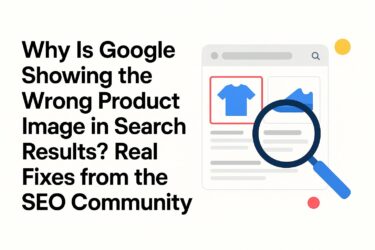You’re showing up in search. That’s great. But no one’s clicking. Not so great.
Low click-through rate (CTR) in Google Search Console is one of the most frustrating problems for website owners and SEOs. It’s like being on stage in front of a crowd and no one claps. You’re visible, but invisible at the same time. So, let’s talk about why that happens—and what you can do to finally get the clicks your pages deserve.
What is CTR, and Why Should You Care?
Click-through rate (CTR) is the percentage of people who see your page in search results and actually click on it. It’s calculated like this:
CTR = (Clicks / Impressions) x 100
If your page showed up 1,000 times and got 30 clicks, that’s a 3% CTR.
CTR matters because:
- It affects how much traffic you get from search (obviously).
- It may influence your rankings. Google takes user interaction signals into account.
So if your content is showing up in Google but getting skipped over like day-old donuts, it’s time to do something about it.
Start by Looking at the Data
Google Search Console gives you everything you need to pinpoint low CTR pages:
- Head to the Performance report.
- Filter by pages with high impressions and low CTR.
These are the pages that are ranking but not converting those rankings into traffic. That’s your starting point.
Why CTR Tanks (and How to Spot It)
Now, there’s no single reason your CTR is low—but here are a few common culprits:
Your Title Tags Are Boring or Confusing
Searchers don’t read. They scan. Your title has to grab attention, communicate value, and stand out from the noise.
Bad: “Women’s Jackets | Brand Name”
Better: “Stylish Women’s Jackets – Free Shipping, New Season Styles”
You want to pack in benefits, clarity, and a little intrigue if possible.
Meta Descriptions That Just… Sit There
They don’t directly impact rankings, but they do impact clicks. Think of them as your elevator pitch in 160 characters. If you’re not using custom meta descriptions, Google may pull random bits of your page. That’s rarely ideal.
Use this space to:
- Sell the benefits.
- Mention free shipping, guarantees, returns—whatever helps.
- Reinforce the user’s search intent.
You’re Not Standing Out Visually
Ever scroll through Google and notice how some listings just pop? That’s usually thanks to rich results—stars, images, prices, FAQs.
You can achieve that with structured data (schema). For eCommerce, review schema and product schema can do wonders. For content, FAQ schema or HowTo markup can set you apart.
You’re Targeting the Wrong Intent
Sometimes, the problem isn’t your listing. It’s that your page doesn’t match what the user wants.
Example: You’re ranking for “best hiking boots” but your page is a product page for one boot. That’s a mismatch.
Match your content to the search intent:
- Informational? Write guides.
- Navigational? Show comparisons.
- Transactional? Feature products, offers, and clear CTAs.
You’re One of Many, Saying the Same Thing
In competitive spaces, everyone’s using the same keywords, the same product names, the same titles. The result? A SERP where every listing looks the same.
Add personality. Inject brand voice. Try something unexpected.
Instead of: “Noise-Cancelling Headphones | Tech Brand”
Try: “Silence Everything: Noise-Cancelling Headphones Built for Focus”
It’s a small change—but it can grab attention.
Improve the Actual Snippet
CTR is often seen as a “meta” issue—titles, descriptions, schema. But sometimes, the content itself needs a glow-up.
If Google is auto-generating your snippet from on-page content, make sure that content:
- Is well-structured (use headers, bullet points).
- Puts the important stuff up top.
- Includes keywords in natural, clear language.
Fixing CTR Doesn’t Mean Fixing Everything
It’s tempting to overhaul every underperforming page. Don’t. Start with:
- Pages with lots of impressions but low clicks.
- Pages already ranking in top 10 (they have potential).
- Pages tied to valuable products or services.
Fix those first. Then roll out the approach elsewhere.
A Quick Checklist to Boost CTR (With Actual Tips):
- Rewrite Title Tags to Include Benefits, Not Just Keywords
Too many title tags are just keyword dumps or brand mentions. Instead, try highlighting the actual benefit of clicking. Ask yourself: what’s in it for the searcher? - Write Compelling Meta Descriptions
Don’t let Google auto-generate them. Use this space to pitch your page—emphasize trust signals, special offers, or how your page solves the user’s problem quickly. - Add Structured Data Where It Makes Sense
Use schema markup to enable rich results like star ratings, product pricing, or FAQs. It makes your result stand out visually and can improve both CTR and conversions. - Match Content to the Correct Search Intent
If you’re showing up for a keyword but not getting clicks, double-check whether your page actually answers what the user is likely looking for. Are they comparing? Shopping? Learning? Match your page to that purpose. - Improve On-Page Content So Google Pulls a Better Snippet
If Google insists on pulling content from the body of your page, make sure it’s clean, clear, and relevant. Lead with your strongest messaging and keep things easy to skim.
CTR Takes Time—But It’s Worth It
This isn’t an overnight fix. You’ll need to test. You’ll need to monitor. But it’s one of the highest-impact, lowest-effort improvements you can make to your site.
Think about it: you’re already getting impressions. That means Google sees you as relevant. A few tweaks can unlock a ton of extra traffic.
Not Sure Where to Start? Let’s Fix It Together
At Algo Digital, we specialise in technical and content-focused SEO. That includes digging into your Search Console data, identifying low-CTR pages, and turning them into click magnets.
If you’re tired of ranking with no results, let’s talk. Head to algodigital.co.uk and book a free strategy call.
Let’s make your visibility actually count.



